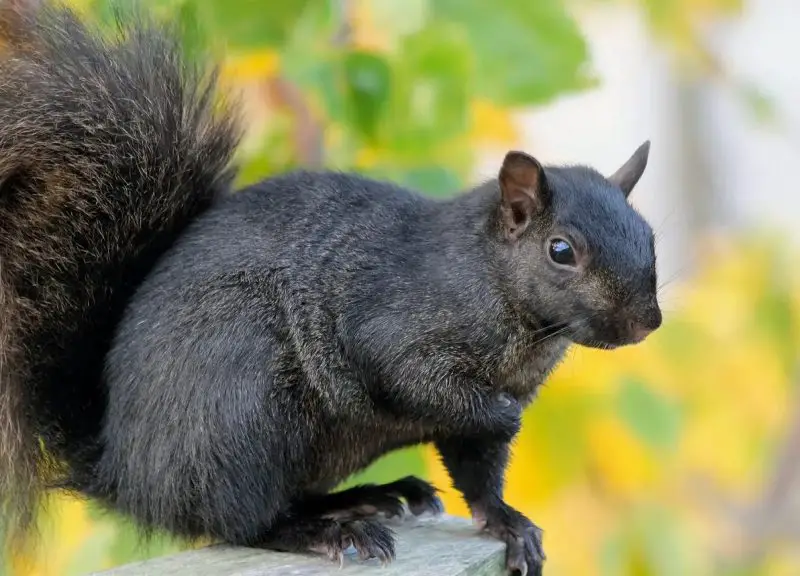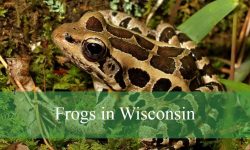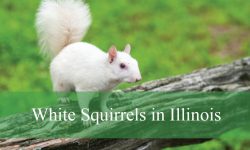If you’ve ever glimpsed a dark, sleek squirrel darting across a park or forest in Pennsylvania, you might have paused and wondered what makes it so different. These shadowy creatures—known as black squirrels—are among the most fascinating wildlife stories in the Keystone State. Though they look mysterious, their existence has a surprisingly scientific explanation rooted in genetics, adaptation, and even human influence.
In this in-depth guide, we’ll uncover everything you didn’t know about black squirrels in Pennsylvania: their origins, distribution, behavior, genetics, and the myths surrounding them. Whether you’re a wildlife enthusiast, a curious local, or someone who’s spotted one for the first time, this article will give you a deeper appreciation for these striking forest dwellers.
What Exactly Are Black Squirrels?

A Color Variant, Not a New Species
Black squirrels aren’t a distinct species. They’re simply Eastern Gray Squirrels (Sciurus carolinensis) with a genetic variation called melanism. This trait results from an overproduction of melanin—the same pigment responsible for dark hair, eyes, and skin in humans. Because of this genetic twist, their fur appears jet black, charcoal, or deep chocolate-brown depending on the light.
The Genetic Story Behind Their Color
The black coloration comes from a mutation in the melanocortin-1 receptor (MC1R) gene. This mutation changes how melanin is produced, resulting in darker pigmentation. Interestingly, this same mutation exists in the Fox Squirrel (Sciurus niger) species, suggesting a shared evolutionary pathway.
When two squirrels carrying the melanistic gene mate, their offspring are more likely to have black fur. In mixed populations, both gray and black squirrels coexist naturally, with the ratio depending on local genetics and environmental conditions.
Do They Behave Differently?
Behaviorally, black squirrels are almost identical to gray squirrels. They share the same habits—burying acorns, foraging for food, building leaf nests, and raising young in tree cavities. The only subtle difference lies in how they regulate body heat; darker fur absorbs more sunlight, potentially giving them a survival edge in colder northern regions of Pennsylvania.
Where to See Black Squirrels in Pennsylvania
Northern and Central Pennsylvania Hotspots
Black squirrels are most commonly reported in north-central Pennsylvania, where cooler climates and dense forests favor the spread of the melanistic gene. Counties such as Clinton, Lycoming, Potter, and Tioga are especially well-known for sightings. The region’s mature oak and hickory forests provide both the food and habitat that sustain thriving squirrel populations.
Urban and Campus Populations
Black squirrels have also made their mark in Pennsylvania’s urban centers. On the University of Pennsylvania campus and in Philadelphia’s larger parks, these ebony-furred squirrels are beloved local icons. Historians believe some of these city populations may have originated from intentional introductions in the early 1900s.
Why Some Areas Have More Than Others
The frequency of black squirrels in an area often depends on isolation and genetics. In northern woodlands, smaller squirrel populations tend to interbreed more closely, allowing the black gene to become dominant. In more diverse or southern populations, gray coats remain more common due to higher gene variation and warmer temperatures.
Fascinating Facts About Black Squirrels
1. They’re Not as Rare as You Think
In many parts of northern Pennsylvania, black squirrels make up as much as 15–25% of the local squirrel population. Hikers and hunters often report spotting several during a single outing in places like Bald Eagle State Forest or Tioga County.
2. Their Color Offers a Winter Survival Advantage
Dark fur absorbs more heat, which can help black squirrels stay warmer in freezing conditions. This advantage likely explains why they’re more abundant in colder climates and rare in the warmer southern U.S.
3. They Were Introduced to Some Urban Parks
Historical records suggest that black squirrels were once introduced to campus parks and estates as curiosities. In Philadelphia and parts of western Pennsylvania, these introductions may have helped establish lasting urban populations.
4. Their Diet Mirrors That of Gray Squirrels
Black squirrels are omnivores that eat nuts, seeds, buds, fungi, fruits, and occasionally insects. In autumn, they’re often seen caching acorns for the winter, helping regenerate forests as forgotten acorns sprout into new trees.
5. They Can Appear Brownish in Certain Lighting
Depending on genetics and sunlight exposure, some “black” squirrels appear dark brown or chocolate-colored. Their fur can also fade slightly with age or heavy sun exposure.
Ecology and Behavior of Black Squirrels
Habitat Preferences
Black squirrels inhabit a variety of landscapes—deciduous forests, wooded suburbs, and city parks. They prefer areas with mature trees, especially oaks and hickories, that provide abundant nuts for winter. In urban environments, they adapt easily to scavenging near bird feeders or public gardens.
Daily Activity and Social Behavior
Like all gray squirrels, black squirrels are diurnal, most active during early morning and late afternoon. They’re territorial during the breeding season but often tolerate each other during mast-rich autumn months.
Role in Pennsylvania’s Ecosystem
Squirrels play a crucial role in forest regeneration. By burying and forgetting acorns, they help propagate the very trees that sustain them. Black squirrels, being genetically the same species, perform this ecological service equally well.
Predators and Natural Threats
Their main predators include hawks, owls, foxes, and snakes. Interestingly, black squirrels may have slightly reduced camouflage in snowy environments, making them more visible to predators during winter months.
Why the Black-Fur Trait Persists
A Genetic Advantage in the North
The black coat’s ability to absorb and retain heat gives melanistic squirrels a thermal advantage in northern environments. In contrast, gray fur reflects more light and may be advantageous in southern, warmer areas.
Population Isolation and Gene Frequency
In certain forest pockets of Pennsylvania, limited interbreeding with larger gray populations allows the black gene to dominate. This isolation explains why entire forest tracts might have high densities of black squirrels while nearby towns have none.
Human Influence
Urban introductions and reduced predation rates have also allowed black squirrel populations to expand in cities like Philadelphia. College campuses and botanical gardens with dense tree cover provide ideal mini-habitats.
How to Spot Black Squirrels in Pennsylvania
Best Places to Look
- Bald Eagle State Forest (Clinton County) – Rich hardwood forests and known black squirrel sightings.
- Tioga State Forest (Tioga County) – Frequent black squirrel populations in mature oak stands.
- Philadelphia Parks & University of Pennsylvania Campus – Famous for their urban black squirrel residents.
Best Times to Observe
The best time to spot black squirrels is during early morning or late afternoon in autumn, when they are busy collecting acorns. During winter, they’re more visible against snow-covered ground.
Tips for Observers
- Stay quiet and patient—black squirrels are wary and quick.
- Bring binoculars for distant views in tall canopies.
- Avoid feeding or approaching them too closely.
- Record sightings for citizen science projects tracking wildlife diversity.
Conservation and Myths About Black Squirrels
Protected Status
In Pennsylvania, black squirrels are legally treated the same as gray squirrels. They can be hunted during the standard squirrel season with the proper license, though most wildlife watchers prefer to admire them alive.
Myths and Misconceptions
- Myth: Black squirrels are a different species.
Fact: They’re the same species as Eastern Gray Squirrels with a color mutation. - Myth: Black squirrels bring bad luck.
Fact: Pure folklore—no evidence supports this. - Myth: Black squirrels are aggressive.
Fact: Their behavior is identical to gray squirrels; personality differences depend on the individual, not color.
Human Interactions
Feeding squirrels, regardless of color, can cause dependency and health issues. It’s best to appreciate them naturally and help by planting native trees like oaks or hickories that sustain their food supply.
Why Black Squirrels Are Important
A Symbol of Natural Diversity
Black squirrels remind us of how nature continuously adapts and evolves. They demonstrate how minor genetic variations can create visible and beautiful diversity in wildlife.
An Indicator of Healthy Habitats
The presence of black squirrels, alongside gray ones, often indicates robust forest ecosystems with ample food and shelter.
A Tool for Education
Because of their striking appearance, black squirrels make excellent teaching examples for genetics, ecology, and adaptation. Many Pennsylvania educators use them to spark curiosity in students learning about wildlife.
FAQs About Black Squirrels in Pennsylvania
Are Black Squirrels Native to Pennsylvania?
Yes. Black squirrels are native Eastern Gray Squirrels with a melanistic gene. They’ve been part of Pennsylvania’s ecosystems for centuries.
Why Are They More Common in the North?
Northern Pennsylvania’s cooler temperatures give black squirrels a survival edge. The black fur absorbs heat, making it advantageous in snowy or cold environments.
Do They Interbreed With Gray Squirrels?
Absolutely. Black and gray squirrels belong to the same species and interbreed freely. Their offspring can be black, gray, or intermediate shades depending on genetics.
Are Black Squirrels Rare?
In most of Pennsylvania, yes—but in some forest regions, they can be quite common. Urban areas with introductions may also host stable populations.
Can I Keep a Black Squirrel as a Pet?
No. It’s illegal to keep any wild squirrel as a pet in Pennsylvania. Wildlife should remain free to thrive naturally.
Are Black Squirrels Aggressive?
No. Their temperament is identical to gray squirrels. They may appear bold in cities because they’re used to humans, but they’re not inherently aggressive.
Final Thoughts
The black squirrels of Pennsylvania are living testaments to nature’s subtle beauty and resilience. These dark-coated creatures are not mutants or misfits but reminders that even the most familiar animals can surprise us. From the forests of Tioga County to the urban parks of Philadelphia, they’ve carved out a place in both our ecosystems and our imaginations.
Next time you stroll under Pennsylvania’s oaks or maples, keep an eye out for that flash of black fur—it’s a small but powerful symbol of the hidden wonders thriving all around us.






